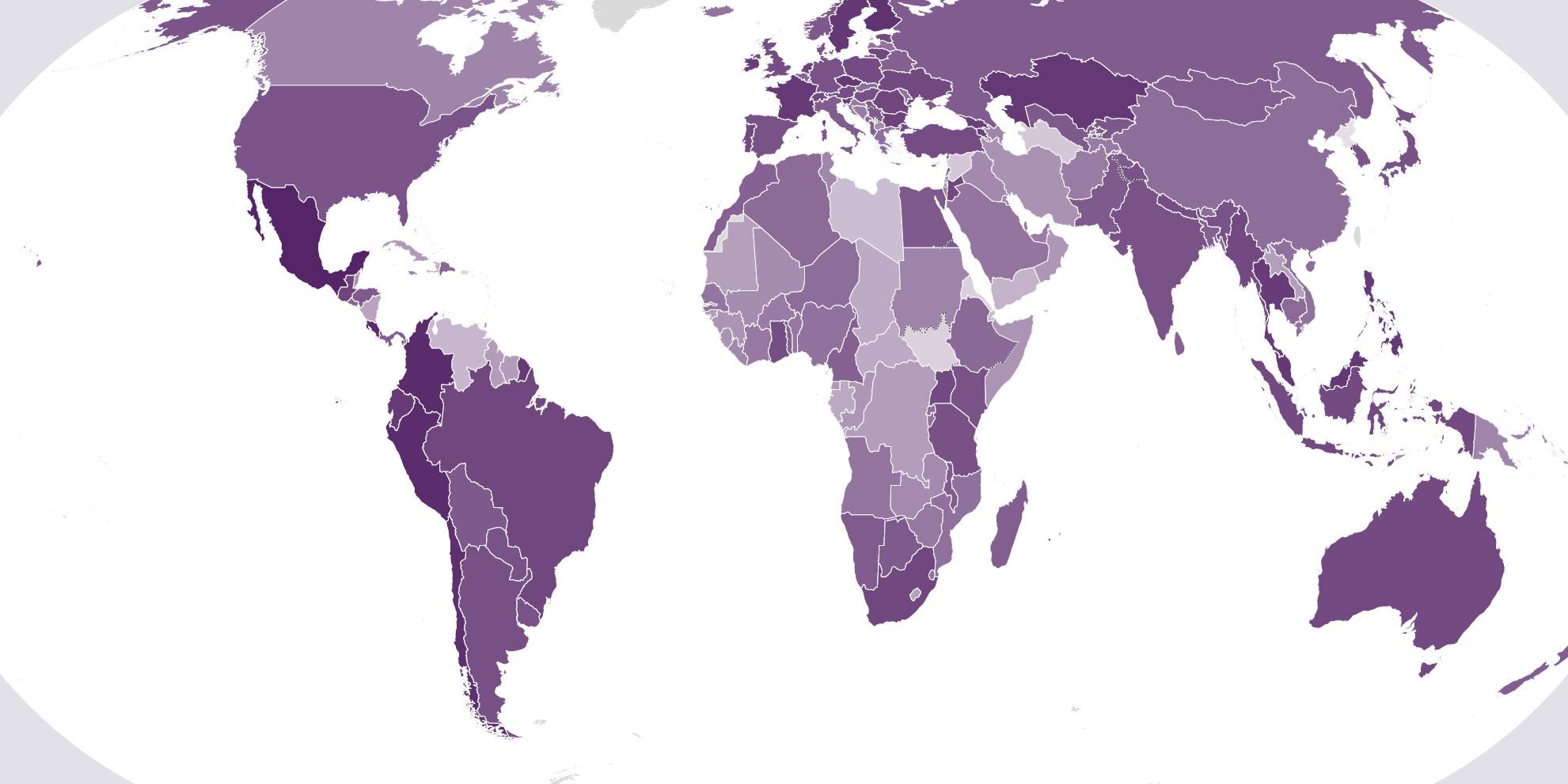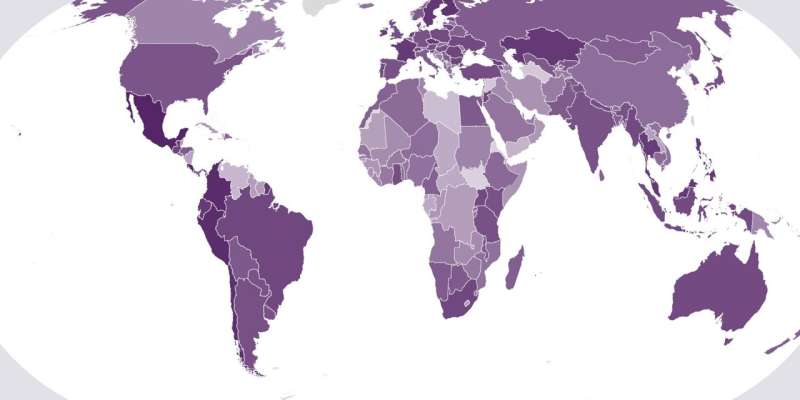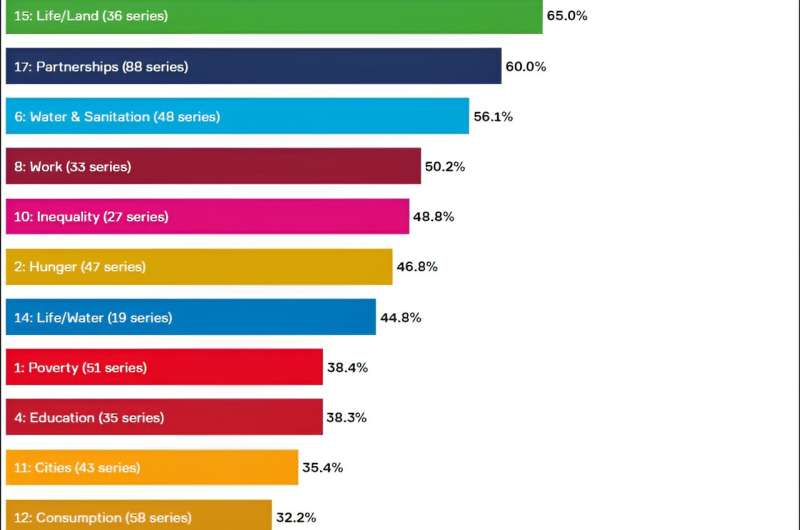

To make informed decisions, governments and international organizations need data. The United Nations has been analyzing the global availability of such data together with ETH Zurich. This has brought to light some surprising insights.
Without data, it is not possible to make effective political decisions such as promoting a particular energy source, combating poverty in rural regions, or limiting the spread of a particular disease. Or to put it in the words of Christoph Gössmann, “Without data we are flying blind. Unfortunately, this is currently too often the case.”
Gössmann is a doctoral student in the Law, Economics and Data Science Group under ETH Professor Elliott Ash. Together with staff from the Office of the Secretary-General of the United Nations (UN), he has been investigating how the availability of data from all 193 Member States can best be evaluated and presented—data that can be used to measure how the UN’s 2030 Agenda is progressing.
The 2030 Agenda leads the way to a sustainable world in harmony with nature and in prosperity, peace and partnership. The centerpiece of the Agenda comprises the 17 Sustainable Development Goals (SDGs), which make progress—or regress—measurable. But data are needed for this.
Gössmann has developed the SDG Monitor together with UN staff. “With our analysis app, we provide decision-makers in governments and international organizations with the foundation they require for evidence-based decision-making,” says Gössmann.
Little data on peace and other topics
The SDG Monitor is freely available and innovatively combines various official data sets of the United Nations, thereby generating new insights in an easily accessible manner. The Monitor helps uncover data gaps in specific countries and topic areas, and analyzes which countries supply data particularly consistently. The Monitor automatically compiles diagrams and links data availability, for example, with data on which international organization is responsible for collecting the data (Custodian Agency).
This enables users of the tool to display the desired data availability for one or more countries and to break down the analysis even further. The following diagram illustrates data availability per SDG. Topics such as energy, health and industry are documented considerably better than those such as peace, climate and gender.

Surprising insights published in the accompanying report
One year after the SDG Monitor went online in 2022, Gössmann published a half-time report on the 2030 Agenda together with colleagues from the United Nations and the Global Partnership for Sustainable Development Data. Besides insights about which data are available where, the report provides a lot of background on why data availability varies so much across countries and topics.
The authors present some core insights: more data are needed concerning urgent priorities such as gender equality (SDG 5) and climate action (SDG 13). The 30 countries with the best data availability include 18 developing countries.
“This was initially a surprising finding for us,” says Gössmann. “On closer inspection we can attribute this observation, in part, to differences in national priorities. Developing countries often align more closely with the SDGs than developed countries.” Notably, Switzerland is also one of the top 30.
The report also notes that the availability of data varies depending on the organization responsible for collecting the data (Custodian Agency). Among other things, data availability depends on how costly the data collection methods are and how developed the statistical standards for data collection were when the 2030 Agenda was launched. For example, some data can be derived relatively cost-efficiently from satellite data, while other data require the implementation of expensive and time-consuming surveys.
Science and politics hand in hand
“It is important to stress that the SDG Monitor only examines which data are available for which country and on which topic,” says Gössmann. “The app does not measure the progress made on the 2030 Agenda—for instance, whether women and men are represented equally in parliaments throughout the world—but rather whether we actually have the requisite data to make a statement about this.”
Amid widespread data gaps, the SDG Monitor plays a crucial role in promoting accountability and transparency, helping to maintain pressure on the implementation of the SDGs.
So, are governments really flying blind as far as the evidence for their decisions is concerned? Gössmann doesn’t consider the situation to be quite so drastic. In recent years, data have been reported to the United Nations somewhat faster than in the past. Moreover, countries rely on various data sources in their decision-making, not just those collected through SDG reporting.
Nevertheless, it is crucial to improve the availability of SDG data, which requires strong political will. Beyond public pressure, progress can be driven by developing national applications for SDG data—integrating it not only for SDG reporting but also into national decision-making processes.
Gössmann adds, “It then pays off for countries to invest in the collection of SDG data. And for countries unable to make the investment on their own, the international community needs to contribute financially and help build local capacities.”
The SDG Monitor supports decision-makers in international organizations, governments and civil society in all these efforts.
More information:
Pulse of Progress: The State of Global SDG Data in 2023. www.research-collection.ethz.c … /20.500.11850/630718
Citation:
For UN Agenda: Data gaps detected in 193 countries (2024, October 7)
retrieved 7 October 2024
from https://phys.org/news/2024-10-agenda-gaps-countries.html
This document is subject to copyright. Apart from any fair dealing for the purpose of private study or research, no
part may be reproduced without the written permission. The content is provided for information purposes only.